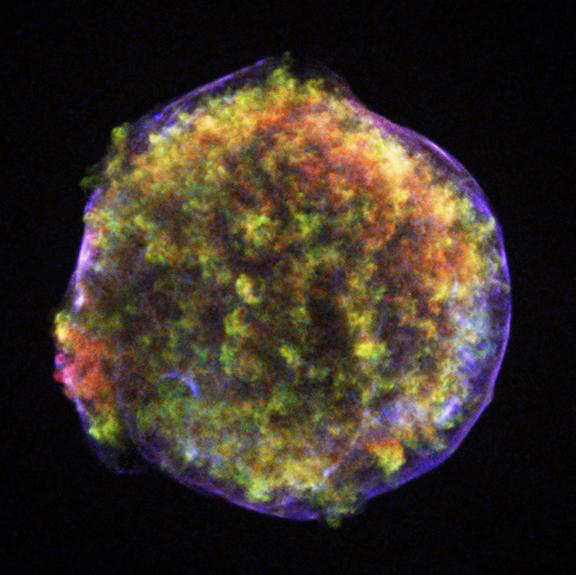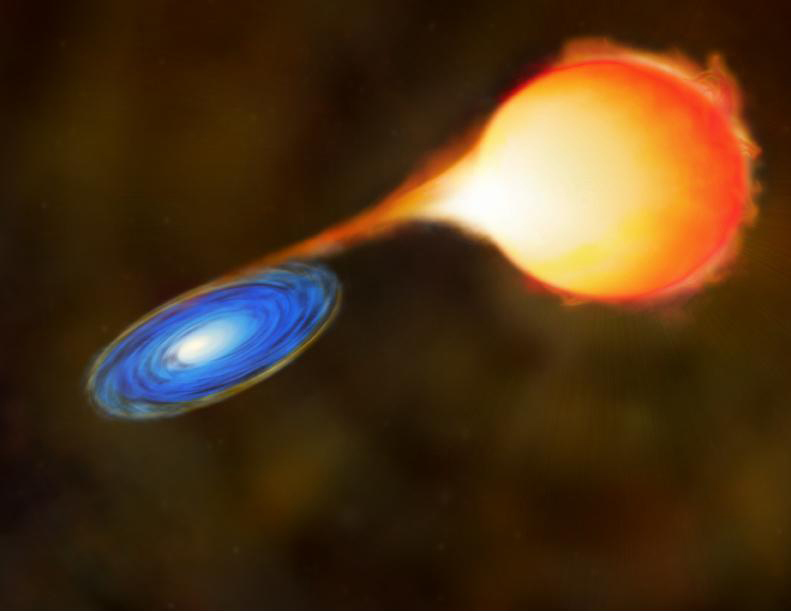CXC Home | Search | Help | Image Use Policy | Latest Images | Privacy | Accessibility | Glossary | Q&A
Type Ia Supernovae
A white dwarf is not always the end product in the collapse of a mid-sized (~.8 to 8 solar masses) star if it is in a contact binary system. Suppose two stars, one with one solar mass and the other with five solar masses are in a binary system. The five solar mass star runs out of hydrogen faster than its less massive companion, becomes a red giant, shrugs off a planetary nebula, and collapses into a white dwarf. Eventually the companion star runs out of hydrogen and enters the red giant stage. The outer layers of the red giant are loosely held by the star, and the extreme gravitational field of the white dwarf starts pulling the material from the red giant into an accretion disk around the white dwarf. The mass transfer continues, with the material orbiting the white dwarf in the accretion disk. Magnetic friction slows the matter's orbital motion, which causes the matter to spiral through the disk down to the surface of the white dwarf. The falling and spiraling of the matter towards the white dwarf releases large amounts of gravitational energy and heats the accretion disk. The white dwarf accretes matter from its companion relatively rapidly at the Langarian point – the point where the Roche lobe of the white dwarf and red giant make contact. The Roche lobe is the region of space around a star in a binary system within which orbiting material is gravitationally bound to that star; the red giant’s outer atmospheric layers are easily transferred by the strong gravity of the white dwarf.Consequently, the white dwarf accretes mass. As the mass of the white dwarf starts to approach Chandrasekhar’s limit (1.4 solar masses), the density and temperature in the center of the white dwarf become so severe that carbon starts fusing explosively. Within one second the fusion moves from the center to the surface and the white dwarf undergoes a thermonuclear explosion and is completely destroyed. Only the remnant remains. All of the core’s matter – the products of nuclear fusion (iron, nickel, silicon, magnesium and other heavy elements) plus unfused carbon and oxygen - are ejected into the interstellar medium at speeds upwards of ~48,000,000 km/hr. This type of event is called a Type Ia supernova.





